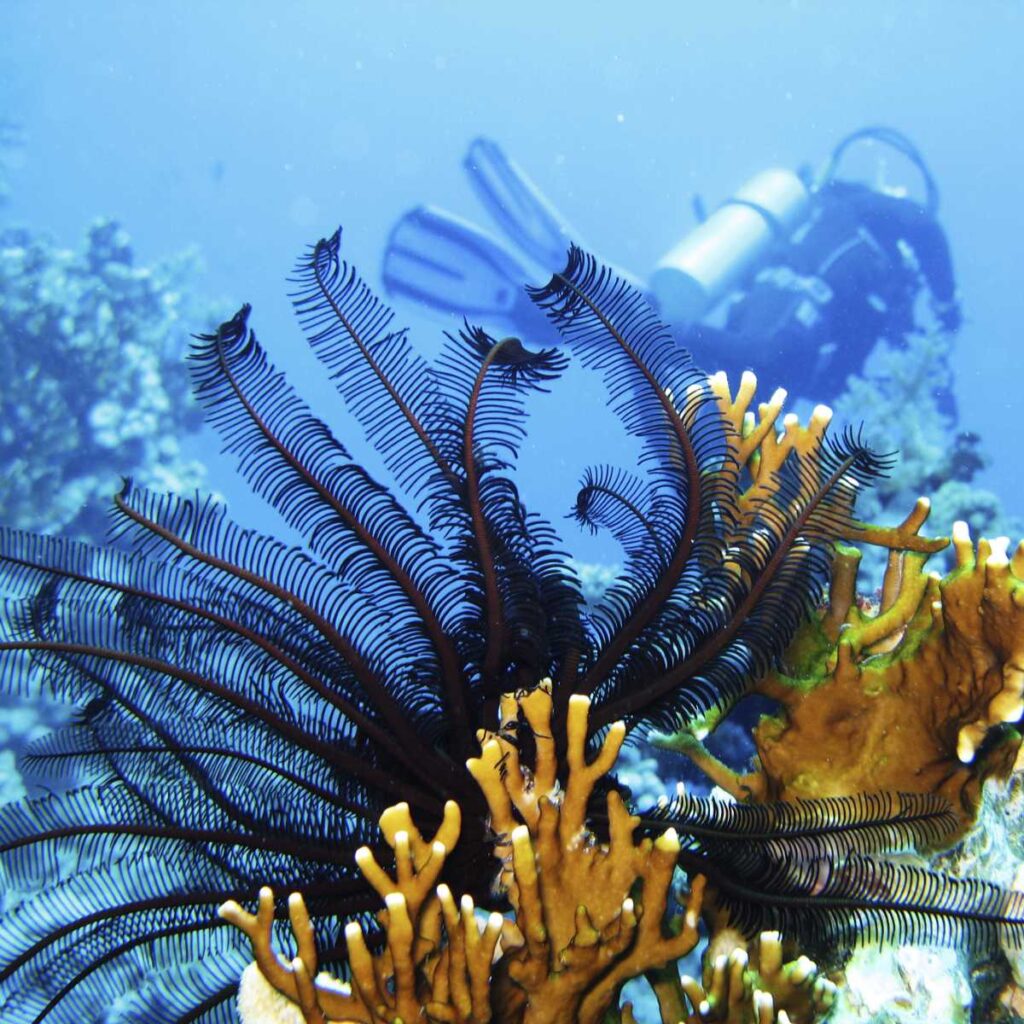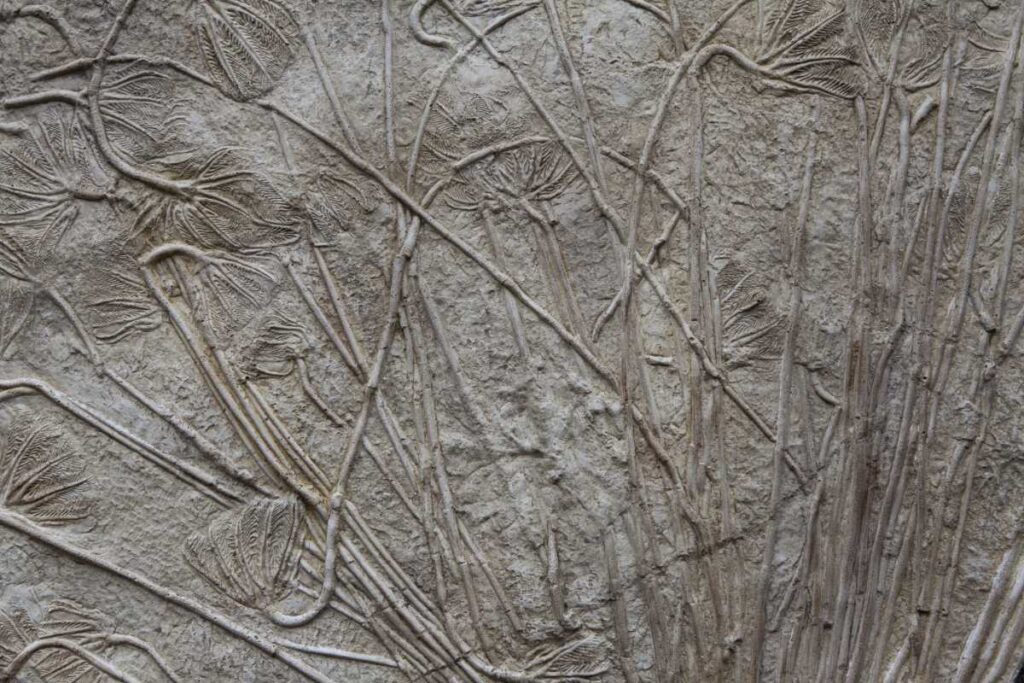Last Reviewed and Updated on August 7, 2022
Crinoids are marine creatures that live on the sea bottom and are common fossils found in rocks. Once widespread, these creatures didn’t bode well during the extinction, with their numbers falling dramatically. Read through these facts about crinoids, one of the coolest-looking organisms in the sea.

1. Crinoids are animals
They might look like flowers under the sea or like algae, but they are animals. They are marine animals in the class Crinoidea, part of the phylum Echinodermata, which also includes starfish, sea urchins, sea cucumbers, and brittle stars.
2. Stalked crinoids are called sea lilies
Adult crinoids can either be attached to the sea bottom by a stalk or without a stalk. The species where the adults are attached by a stalk are commonly called sea lilies. The unstalked forms are called feather stars or comatulids.
3. Most modern crinoids lack a stem as adults
When it comes to crinoids, most have a stem at some part of their life, usually as juveniles. Most adult species become free swimming as adults.
4. They can swim
As most adults don’t have a stem, they are free moving. Most of the time, crinoids move around by crawling. But they can also swim. They usually swim in short bursts. They will first swim upwards and then horizontally at speeds of about 2.8 inches / 7 cm per second.
5. Crinoids can move pretty fast in the stalked form as well
Stalked forms are usually attached at one location and don’t move around much, and when they do, the motion is relatively slow (2 feet / 0.6 meters per hour).
In 2005 however, a stalked crinoid was observed pulling itself along the sea floor with amazing speed (between 472 to 591 feet / 144 to 180 meters per hour).
6. There are only 600 living species of crinoids
600 might seem like a large number, but considering these animals were once widely spread, there are over 6000 fossil species described.
7. The largest fossil crinoid is 130 ft / 40 m in length
The largest known crinoid fossil had a stem of 130 ft / 40 m in length.
Crinoid fossils are pretty common, although full intact specimens are quite rare.

8. They don’t have a brain
They have a nervous system but don’t have a central brain, just like their close cousins; sea urchins, starfish, and a couple of other brainless animal species.
9. They can regenerate lost limbs but aren’t capable of cloning themselves
Crinoids have great regenerative abilities and will regrow any limbs they lose. Unlike some species of starfish, crinoids aren’t able to grow a new individual animal from a lost limb.
10. Crinoids have a water vascular system
Their water vascular system isn’t connected to external seawater in the same way as is with other echinoderms. It is connected to the external seawater through a large number of pores.
This water vascular system is a hydraulic system, and echinoderms use it for locomotion (moving around), food and waste transportation, and respiration.
Loved this fact? Be sure to check our list of 100 weird animal facts.
